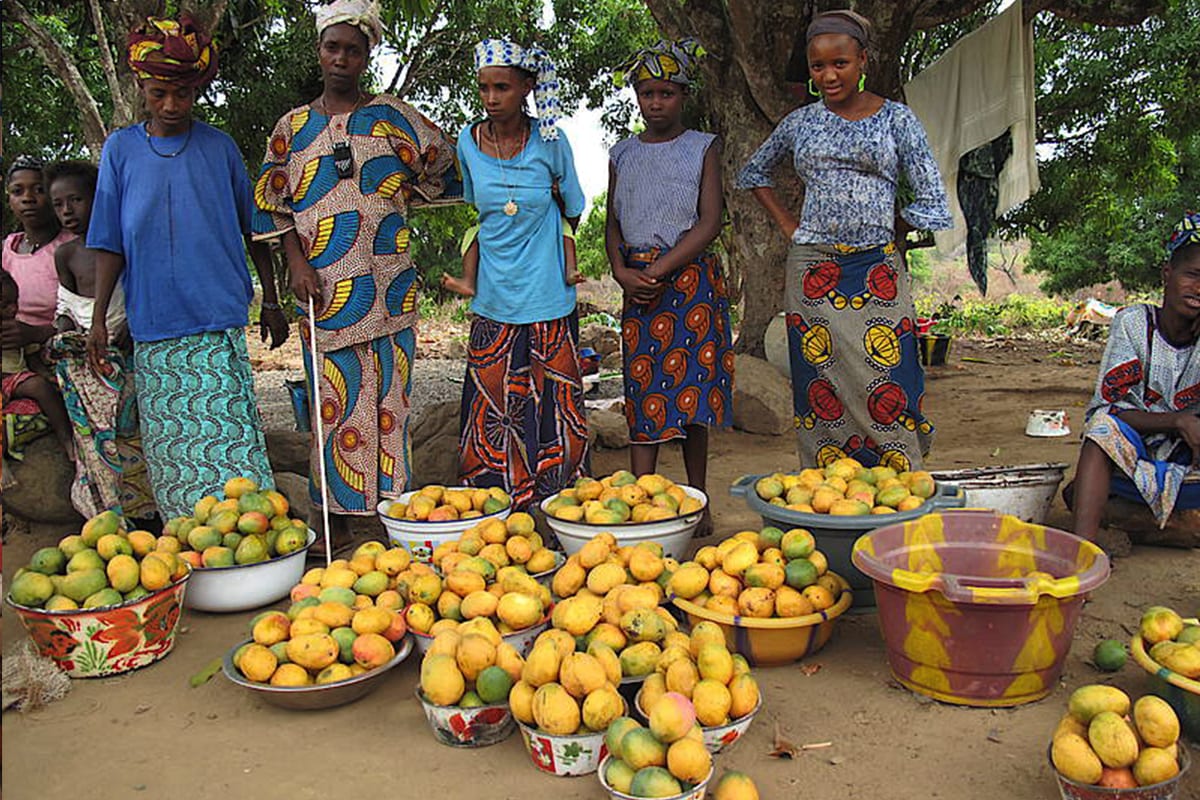Forests Are the New Farms
By Susan Tonassi, May 15, 2015

Women selling mangoes in a roadside market in Guinea.
What would we eat if we ran out of room for farmland?
A new report released by the International Union of Forest Research Organizations (IUFRO) at the United Nations Forum on Forests last week argues that forests and trees would provide plenty to snack on. From fruits and nuts to insects and bushmeat, the cornucopia supplied by forests already feed one billion people worldwide. The poor in Africa and Asia especially benefit from these open air grocery stores.
While some tree foods–such as grubs, white sapote and allanblackia oil–might take getting used to for some, other delicacies grown in forests and on trees, from coffee and apples, to mangoes and avocados, are already regular fixtures of diets across the globe. As an added bonus, this cornucopia not only supplies important vitamins and nutrients, it also provides an income source. For example, in the Sahel region of Africa, trees–especially shea nut trees –contribute 30 percent of household incomes.
For more information about how forests and trees can feed the world, read these articles:
Forests are ‘key feature’ of food security landscape – BBC
Residents’ control is best answer to threat of deforestation: researchers – Reuters
How tasty forest foods can help solve the global hunger crisis – The Conversation
Mangoes to maggots: 7 forest goods that hold ‘trump car’ to hunger – RTCC
